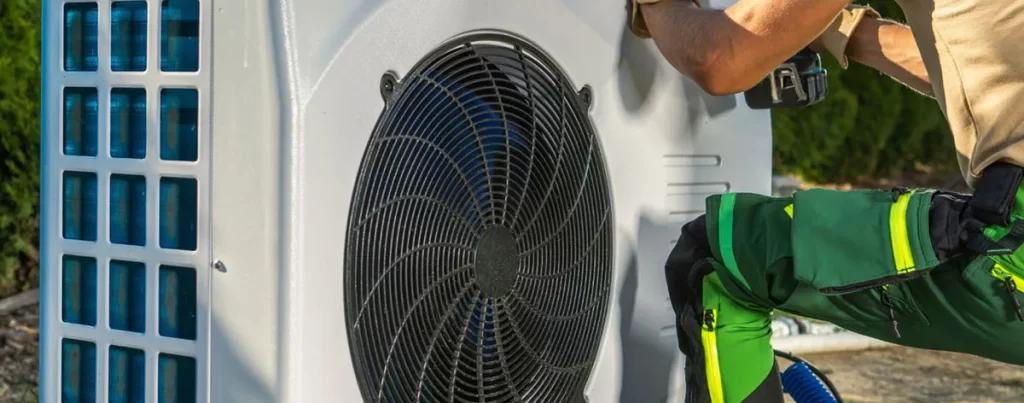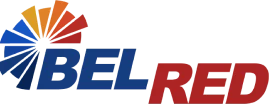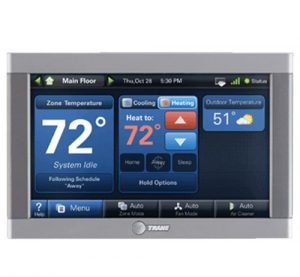As a homeowner, one of the most important decisions you’ll make is choosing the best heating system for your home.
There are plenty of considerations that go into this decision.
It’s not just about comfort – it’s also about efficiency, cost, and the overall impact on your daily life.
Today, we’ll dive into the world of direct-fired and indirect-fired heaters, discussing their advantages and disadvantages, and help you determine which one is right for you.
So, grab a cup of coffee, and let’s chat about heating systems!
What are Direct-Fired vs Indirect-Fired Heaters?
Before we dive into the nitty-gritty, let’s quickly define our two main subjects: direct-fired and indirect-fired heaters.
Direct-Fired Heaters
Direct-fired heaters, also known as open-combustion heaters, work by burning natural gas, propane, or oil to heat the air directly. The air is then pushed by a fan into your home’s ductwork, where it heats up the entire living space.
Direct-fired heaters are typically less expensive to install and cheaper to run compared to their indirect-fired counterparts. However, they can also introduce pollutants into your home, such as carbon monoxide, if not properly maintained.
Direct-fired heaters are not recommended for homes with young children or people with respiratory problems because they require constant fresh air for safe operation.
Pros:
- Simple design: Direct-fired heaters have fewer components, making them easier to install and operate.
- Faster heating: These heaters provide immediate warmth as they directly heat the air without the need for a heat exchanger.
- Lower upfront costs: Direct-fired heaters tend to be less expensive to purchase and install due to their simpler design.
Cons:
- Lower energy efficiency: As direct-fired heaters lose some heat through the exhaust, they are generally less efficient compared to their indirect counterparts.
- Production of combustion byproducts: Direct-fired heaters release combustion byproducts, such as carbon monoxide and nitrogen oxides, which can pose health risks if not properly vented.
- Potential for increased maintenance requirements: Due to the direct contact between combustion and air, these heaters may require more frequent cleaning and maintenance.
Indirect-Fired Heaters
Indirect-fired heaters, on the other hand, work by burning fuel to create heat in a separate chamber. The heat generated in the chamber is then transferred to another heat exchanger, which heats the air that is circulated in your home’s ductwork.
Indirect-fired heaters are generally safer than direct-fired heaters, as they don’t introduce pollutants into your home. They also provide a more even heat distribution, resulting in more consistent temperatures throughout your home.
However, this type of heater is typically more expensive to install and run than a direct-fired heater.
Pros:
- Higher energy efficiency: Indirect-fired heaters capture and utilize more heat from the combustion process, resulting in better energy efficiency.
- Fewer combustion byproducts: As the combustion occurs in a separate chamber, there is a reduced risk of harmful emissions entering your living space.
- Lower maintenance requirements: The separation of combustion and air or liquid circulation in indirect-fired heaters leads to less frequent maintenance.
Cons:
- Higher upfront costs: Due to their more complex design, indirect-fired heaters generally have higher purchase and installation costs.
- Longer time to heat your home: Since heat must pass through a heat exchanger, indirect-fired heaters may take longer to warm your space.
Here at BelRed, we carry a wide variety of heating systems from reliable manufacturers and brands. If you’re unsure what type of heating system is best for your home, we are more than happy to lead you in the right direction!
Contact us today to book an appointment with our skilled team!
Things to Consider When Choosing a Heating System
There’s a lot that goes into choosing the right heating system for your home. Including the following:
- Size and Layout of Your Home
- Fuel Source Availability
- Climate
- Efficiency Ratings
- Maintenance Requirements
If you find it difficult to choose between direct-fired vs indirect-fired heaters after reading this guide, we’d be more than happy to assist you further.
Call us at (855) 345-6161 today to set an appointment with our crew!
Types of Direct-Fired and Indirect-Fired Heaters
There are several types of direct-fired and indirect-fired heaters.
We’ve mentioned them briefly in the past sections, but we’d like to give you a closer look at each type, to help you make more informed decisions down the road.
Direct-Fired Heaters
Below, you’ll find a list of the most common direct-fired heaters on the market, plus their pros and cons.
Furnaces
Furnaces are forced-air systems that heat air directly and distribute it throughout your home using ducts and vents. They can be powered by natural gas, propane, oil, or electricity.
Furnaces are affordable and can heat your home quickly, but they can be less efficient than other options, especially older models.
Space Heaters
Space heaters are portable, direct-fired heaters that provide supplemental heat to individual rooms. They can be powered by electricity, propane, or natural gas. While they’re great for targeted heating, they’re not suitable for whole-house heating and can pose safety risks if not used properly.
Radiant Heating Systems (Direct-Fired)
Some radiant heating systems, such as gas-fired radiant tube heaters or gas wall heaters, use direct-fired technology. These systems heat objects and surfaces directly rather than heating the air. They’re energy-efficient and provide consistent, comfortable heat, but can be more expensive to install.
Indirect-Fired Heaters
Now, let’s take a look at some indirect-fired heaters and their pros and cons.
Boilers
Boilers use a heat exchanger to transfer heat from the fuel source to water, which is then circulated through your home via radiators, baseboard heaters, or in-floor radiant tubing. Boilers can be powered by natural gas, propane, oil, or electricity. They provide even, consistent heat, but can be more expensive upfront and may take longer to heat your home.
Radiant Heating Systems (Indirect-Fired)
Some radiant heating systems use indirect-fired technology, such as hydronic (water-based) radiant floor heating. These systems are energy-efficient, provide comfortable heat, and have low maintenance requirements, but can be costly to install.
Want to learn more about your heating system options? Call us at (855) 345-6161 for details!

FAQs: Direct-Fired vs. Indirect-Fired Heaters
Here’s a list of some of the most frequently asked questions about direct-fired vs indirect-fired heaters from our clients:
What is the main difference between direct-fired and indirect-fired heaters?
The main difference is in how they transfer heat to your home. Direct-fired heaters burn fuel and directly transfer the heat to the air in your home, while indirect-fired heaters use a heat exchanger to transfer heat from the fuel source to your home’s air or a liquid in a hydronic system.
Are direct-fired heaters less energy-efficient than indirect-fired heaters?
Generally, yes. Direct-fired heaters can be less energy-efficient than their indirect-fired counterparts, but this can vary depending on the specific heater model and technology used.
Can I use any type of fuel with direct-fired and indirect-fired heaters?
While both types of heaters can use various fuels such as natural gas, propane, oil, or electricity, the availability of fuel types may vary depending on the specific heater model.
Which type of heater has lower maintenance requirements?
Indirect-fired heaters typically have lower maintenance requirements compared to direct-fired heaters. However, it’s essential to follow the manufacturer’s guidelines for regular maintenance for either type of heater to ensure optimal performance and longevity.
Are indirect-fired heaters always more expensive upfront?
Indirect-fired heaters often have higher upfront costs due to their more complex design and use of a heat exchanger. However, the long-term energy savings and lower maintenance requirements can offset the initial investment.
Can I use a combination of direct-fired and indirect-fired heaters in my home?
Yes, you can use a combination of both heating systems in your home, depending on your specific needs and preferences.
For example, you could use a central indirect-fired heating system like a boiler for your entire home and supplement with direct-fired space heaters in specific rooms if needed.
Are there any safety concerns with direct-fired heaters?
Direct-fired heaters produce combustion byproducts, which can pose safety risks if not adequately vented. Proper installation, venting, and regular maintenance are crucial to ensure safe operation. Always follow the manufacturer’s guidelines and consider installing carbon monoxide detectors in your home for added safety.
Finding the Right Heating System for Your Home
Choosing the right heating system for your home is a critical decision with a lasting impact on your comfort, energy consumption, and overall home value.
A well-suited heating system provides consistent comfort, energy efficiency, and reasonable maintenance requirements. By making the right choice, you can enjoy a comfortable living space, save on energy bills, and contribute to a greener environment.
Professional heating and cooling services play a significant role in helping homeowners with this process.
They offer expert advice, evaluating your home’s specific needs and recommending the most suitable direct-fired or indirect-fired heating system based on factors such as size, layout, fuel availability, climate, and budget.
Proper installation is crucial for safe operation, energy efficiency, and overall performance, and professional technicians ensure that your chosen heating system is installed correctly.
Additionally, regular maintenance is essential for keeping your heating system running efficiently and prolonging its lifespan. Professional heating and cooling services provide routine maintenance, inspections, and repairs, ensuring that your system stays in top condition.
As technology advances and newer, more efficient heating systems become available, these professionals can advise you on when it’s time to upgrade your current system and help you choose the best option for your home.
Trust BelRed Energy Solutions
Ready to upgrade your home’s heating system and enjoy ultimate comfort and energy efficiency?
Look no further than BelRed Energy Solutions for reliable heating services in Seattle, WA.
Our team of experts will assist you in selecting the best heating solution for your house and will assure skilled installation and maintenance.
Contact us today to get started on your journey to a warmer, more energy-efficient home!







